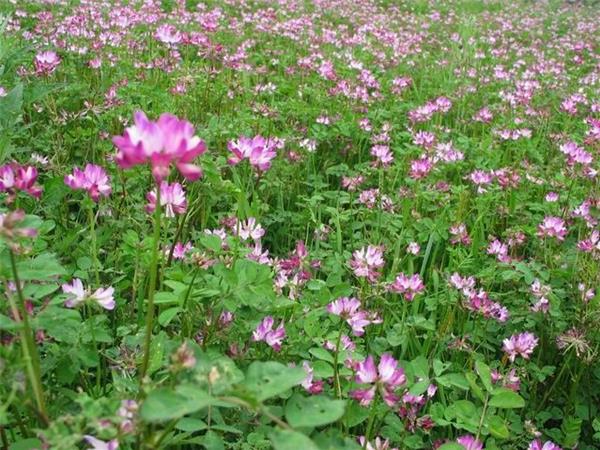Detailed Analysis of Medicinal value and Culture methods of Caryophyllum chinense
Carnation grassland is a kind of plant that grows in the wild, because it has both ornamental value and medicinal value, so it has been used for indoor pot culture in recent years, which can beautify the room.

I. the medicinal value of Phyllostachys pubescens
The classics of nature and taste: bitter, cold. Return to the heart and small intestine meridian.
Chemical composition: whole grass contains saponins, volatile oil, mainly eugenol, phenylethanol, benzyl benzoate, benzyl salicylate, methyl salicylate.
Efficacy indications: Carnation grass has the effects of clearing heat and diuresis, promoting blood circulation, promoting menstruation and so on. It can be used to treat urethritis, cystitis, glomerulonephritis, hypertension, amenorrhea, irregular menstruation, pharyngitis, diarrhea, edema, joint disadvantage and snakebite, furuncle and carbuncle swelling, exciting intestinal tract and other diseases. "Materia Medica preparation" said: "to reduce heart fire, benefit the small intestine, the bladder evil heat, for the treatment of gonorrhea medicine."
1. Carnation grass is used to treat hot, bloody, stone and astringent pain: with flat storage, sea sand, etc., or with Aristolochia mandshurica, talc, etc.
2. Carnation grass has the effect of clearing heat and diuresis, breaking blood circulation, promoting blood circulation and removing blood stasis.
3. Blood stasis amenorrhea: Carnation grass with Salvia miltiorrhiza, Radix Paeoniae Rubra, motherwort and so on.
4. Eczema itching: external washing with single decoction.

Second, the culture method of caryophyllum.
1. Soil: clayey soil which requires good drainage, rich humus, good fertilizer retention and slightly alkaline, can be mixed with 6 parts of garden soil, 2 parts of compost and 2 parts of sandy soil.
2. Watering: Phyllostachys pubescens grows strongly and is resistant to drought. In rainy and wet areas, the soil is easy to harden and the root system develops abnormally due to poor ventilation, so attention should be paid to loosening the soil and drainage in the rainy season. Except for timely watering during the growing and blooming season. It is advisable to keep the soil moist by watering less at ordinary times.
3. Temperature: the suitable temperature for caryophyllum growth is 15-20 ℃. In winter, the temperature should be kept above 12 ℃ in the greenhouse. The air wettability should be kept at about 75%, and proper spraying of water before flowering can prevent the bud from cracking in advance.
4. Fertilization: carnation grass likes fertilizer, applying sufficient amount of baking fertilizer and bone powder before planting, and applying liquid fertilizer continuously during the growing period, generally applying mature thin fertilizer and water every 10 days or so, and applying topdressing after flower picking.
5. Lighting: ensure 6-8 hours of light every day. At the height of summer, the carnation flower is in a semi-dormant state, so we should pay attention to avoid the hot sun exposure. Avoid stagnant water in the basin, otherwise the roots are easy to rot.

6. Diseases and insect pests: the disease of carnation grass is mainly brown spot, which is easy to occur in rainy and humid climate. it is often harmful to the leaves, stems and pedicels of carnation, and the affected leaves appear near purple-red small disease spots at the initial stage, and then gradually expand and show gray-white uplift, the outer edge is light green water ring halo, and connect with each other to form irregular large patches. When the pedicel becomes sick, it causes the flower to wilt early. Control method: ① removed and burned the remains of susceptible plants in time. At the beginning of the onset of ②, 50 carbendazim wettable powder was sprayed with 1000 times, or 0.5% Bordeaux, and 75% chlorothalonil wettable powder was also sprayed.
7. Reproduction: the main method of reproduction is to sow God, which is mostly sown in autumn in the middle and late August. The second seedling grows sturdily and blossoms. Spring sowing is usually from late March to early April. It sprouted in 10 days, but its growth was not as good as that of autumn seedlings. Carnation can also be propagated by cuttings, usually from late spring to early summer or from October to November in autumn. The method is to select the growing branches without buds, cut them into the basal leaves of cuttings J of 5~8cm, leave 2 or 4 upper leaves, and insert them into the river sand for watering and curing, which can take root and survive.

Generally speaking, caryophyllum is relatively easy to breed, and its unique flowers and colors are rich and colorful, which is a good choice for decorating indoor life.
Related
- Wuhan Hospital Iron Tree Blooming Result Was Instantly Frightened by the Gardener Master
- Which variety of camellia is the most fragrant and best? Which one do you like best?
- What is the small blue coat, the breeding methods and matters needing attention of the succulent plant
- Dormancy time and maintenance management of succulent plants during dormancy
- Minas succulent how to raise, Minas succulent plant pictures
- What are the varieties of winter succulent plants
- How to raise succulent plants in twelve rolls? let's take a look at some experience of breeding twelve rolls.
- Attention should be paid to water control for succulent plants during dormant period (winter and summer)
- Watering experience of twelve rolls of succulent plants
- Techniques for fertilizing succulent plants. An article will let you know how to fertilize succulent plants.



